How To Visit Salvador De Bahia And Its Historic Centre...Safely
BRAZILHow To Visit Salvador And Its Historic Centre…Safely
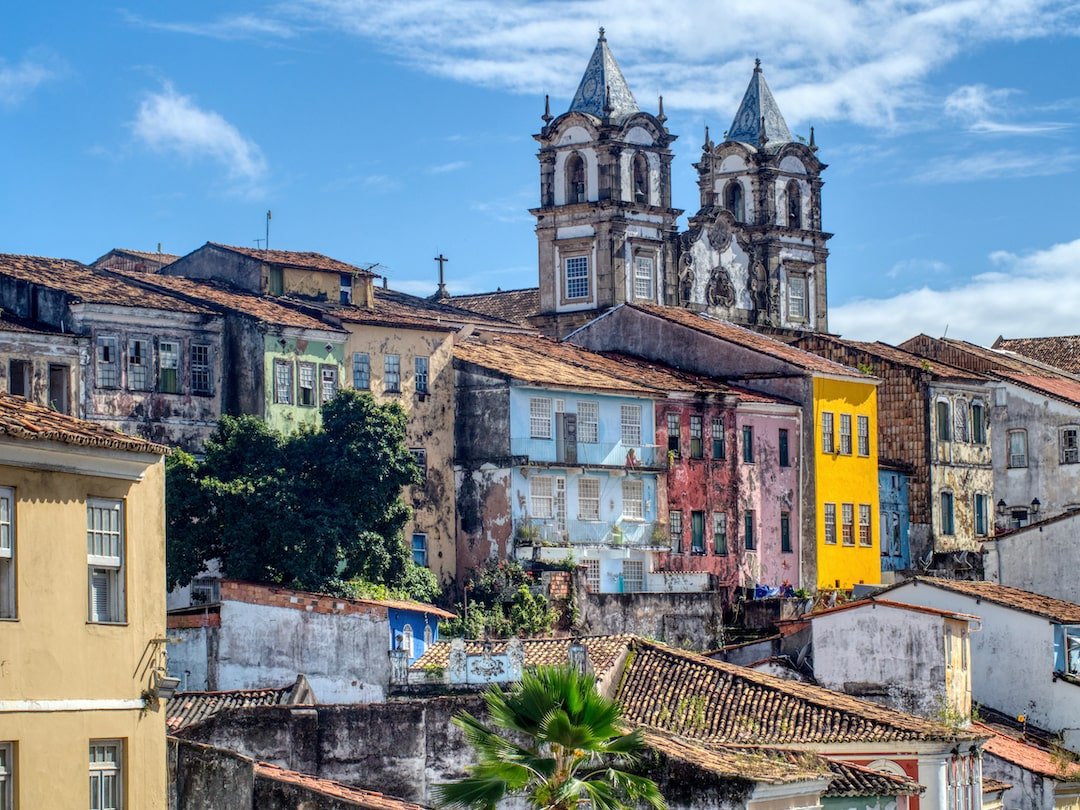
With its turbulent history, incredible West African heritage and fantastic food scene, Salvador is a city like no other.
Regularly cited as one of the most dangerous places in the world, to visit Salvador is to experience Brazil at its most raw. But, with the right precautions and a desire to uncover the cultural riches it undoubtedly possesses, there are plenty of reasons to visit right now.
In this guide, we’ll show you how to explore the city’s historic centre, focussing on where it all started – Pelourinho. Simply because that’s where you’ll want to spend most of your time. We’ll also recommend some of the food you should look out for. And we’ll share with you our own personal guidelines on how to stay safe during your stay.
View of Iglesia do Santissimo Sacramento do Posso from Largo de Pelourinho
Table of Contents
Click on the link to go straight there…
VISIT SALVADOR … SAFELY
- Baianas de Acarajé
- The sounds of the streets
- Capoeira
- Balé de Folclórico da Bahia
- Bonfim wish ribbons
A walk through Pelourinho and the historic centre
- Santo Antônio Além do Carmo
- Igreja Nossa Senhora do Rosário dos Pretos
- Largo do Pelourinho
- Street art
- Praça Terreiro de Jesus
- Igreja e Convento de São Francisco
- Praça da Sé
- Elevador Lacerda
What to eat and drink – and where
- Moqueca Baiana
- Bobó de Camarão
- Acarajé
- Vatapá
- Cocada
- Ice cream
- Cachaça
About Salvador
Approximately 80% of Salvador’s residents today can trace their heritage back to West Africa. The unsurprising reason, of course, is the city’s dark history with slavery. In fact, not only was it the first capital of colonial Brazil, but it was the very first port of entry to the Americas for West African slaves.
Built in the 16th Century on a cliff-top overlooking the world’s largest tropical bay (“The Bay Of All Saints”), the old town of Pelourinho was literally named after the whipping post used to both punish and sell the slaves that landed here. Millions of whom were transported from West and Central Africa to work on the fledgling sugar plantations of northeast Brazil.
After the abolition of slavery in 1888, the state of Bahia became something of a safe haven for former slaves. And, unlike in the south of the country, where the majority of people are of European descent, Salvador retained a rich African heritage passed down through generations, encompassing music, dance, martial arts, food and religion. All wrapped up in the mystical energy of axé, a mixture of samba, reggae and calypso rhythms that permeate Bahaian culture.
And whilst, the city of Salvador (or Salvador de Bahia, to give it its full name) has inevitably expanded from the original Cidade Alta (“Upper City”) to incorporate the land along the beachfront (Cidade Baixa or “Lower City”) and surrounding hillsides, it’s the UNESCO World Heritage site of Pelourinho that holds the most attractions for visitors.
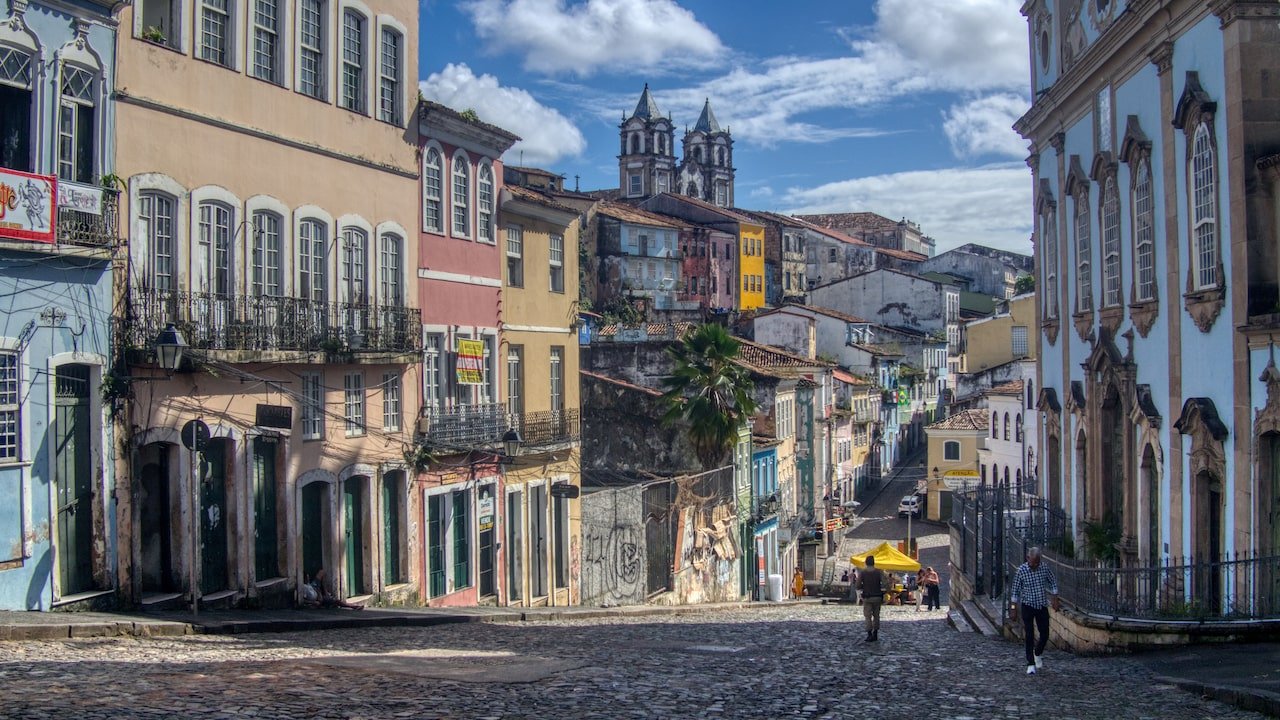
Iconic Salvador
However long you intend to spend in Salvador – and especially Pelourinho – make sure you seek out some of its most iconic cultural highlights. To be fair, they won’t be that difficult to find!
Baianas de Acarajé
You really can’t miss the flamboyant and colourful Baianas de Acarajé – the descendants of female slaves who originally sold their acarajés (deep-fried patties made from black-eyed beans, then split in half and filled with shrimp, spice paste and tomato salad) in a bid to gain their freedom. Those that were successful were referred to by their Baiana de Acarajé moniker and have since played a central role in establishing the delicacy as a symbol of Bahian cuisine.
However, they represent so much more than just the food they sell. Their presence also carries the symbolism of centuries-old resistance against oppression. Especially in the flamboyant Baiana dress – which typically includes an oversized hooped skirt, decorative blouse, headscarf and symbolic beads.
Today, as in the past, they can be found in their mobile stalls on plazas and street corners. But their presence is felt everywhere. Not least by their images in the city’s art galleries, shops and on exterior walls. And in the small Memorial das Baianas do Acarajé on Praça da Sé.
Also, on 25 November each year, Baianas de Acarajé National Day reminds Brazilians across the country of their significance.
In the most touristy plazas you might also be approached by a Baiana to have your photograph taken with her. Be aware that you’ll be expected to pay for the privilege (roughly 5 reais). Likewise if you you just want to take a photograph (after first asking their permission).
Oh, and the acarajé itself? Well, it might not be the healthiest thing you’ll ever eat, but for us, it’s amongst the most satisfyingly spicy and filling street food you’ll find in South America. So don’t leave Salvador without trying one!
Ian negotiating a discount on his acarajé
One of the many pieces of Baiana de Acarajé art
A fully-stacked acarajé

Interested in housesitting while you travel?
The sounds of the streets
True to its African roots, percussion-based music plays a huge part in Salvador life. Including samba-reggae, made famous by Olodum, a percussion band who are based in Pelourinho and whose symbol (a brightly coloured version of the old CND logo) adorns buildings and tee-shirts across the city.
If you’re a Micheal Jackson fan you may remember the video from his “They Don’t Really Care About Us” hit in 1996, which was partly filmed in Pelourinho and features “The King of Pop” wearing an Olodum tee-shirt, whilst dancing to the beat of dozens of drummers.
Percussion schools in Pelourinho ensure that there are plenty of aspiring artists in the pipeline, too. As we discovered during an early-evening caipirinha in Largo do Cruzeiro de São Francisco. A group of six young percussionists, together with their tutor, gave us an impromptu outdoor performance so exhilarating that it took some time afterward for the huge smiles on our faces to finally dissipate.
There are other styles of music, too. Indeed, several genres of African and Caribbean music have been blended over time to create a unique Bahian style. And this all comes to a climax during the annual Carnaval celebrations when the streets are filled with hundreds, if not thousands of percussionists and dancers for a full five days.
A small boy plays drums in Largo de Pelourinho
Capoeira
With an incredible back story, Capoeira is also tied inextricably to West Africa and the slave trade, and is a unique Bahian art form.
So what is capoeira? Essentially it’s a combination of martial arts and traditional dance. The martial arts element was developed by African slaves as a means of self-defence against the slave owners. The dance element was then included to act as a disguise. Nevertheless, the slave owners banned it anyway and so the slaves had to hone their skills in hiding. And it remained a tool of insurrection well into the 20th century until noted capoeira master, Mestre Bimba, reinvented it as performance art in the 1930s.
As with percussion music, capoeira is performed in the streets of Pelourinho at any time of the year. Indeed, if you see a circular gathering of people in one of the plazas, it’ll most likely be for a capoeira performance. And, inside the circle (or roda), two performers mock-fight each other for a minute or two, before being replaced by another couple, and so on.
The performers are usually accompanied by a berimbau (a singled-stringed bow-shaped instrument), an atabaque (floor drum) and a pandeiro (a Brazilian tambourine). Together with the energetic clapping and singing from onlookers and the rest of the performers.
There are plenty of capoeira studios where it’s possible to see the performers practicing (in return for a small donation). But you’re very likely to stumble across a performance in one of the more touristy parts of town, such as the Mercado Modelo and Terreiro de Jesus, too.
Balé de Folclórico da Bahia
However, if you want to see Capoeira at its most exceptional, do yourself a favour and buy tickets for Balé Foclórico da Bahia at the tiny theatre just off Largo de Pelourinho.
We paid 90 reais (£14 / $18) each to watch an intimate, hour-long show that incorporated Bahian samba, traditional folk music, dance and capoeira. We kid you not, it was sensational. Starting off measured and slow, the performance gradually built towards a frenetic climax that left us gasping for breath.
Tickets can be bought from the theatre from 3 pm each day. But be prepared for them to be already sold out for that evening’s performance.
Bonfim wish ribbons
Originating in the early 19th century from Salvador’s Basilica do Senhor do Bonfim, where miracle-making was seemingly a regular occurrence, these wish ribbons were intended to pass on the magic juice to anyone who wore one (as a necklace). Or should we say, “bought one”, as they were also a way of raising revenue for the church. But, so strong was the belief in them that the tradition continued until the mid-20th Century, after which they disappeared.
However, with the onset of tourism later on in the century, the tradition was restored. Only this time the ribbons are worn as bracelets or anklets and are tied with three knots. The wearer can then make three wishes, which can only be fulfilled once each knot has broken (without any help from the wearer).
There are thousands of them attached to the railings outside the basilica, which makes for a colourful photograph. But, if you’re wandering around Pelourinho at any time, you’ll undoubtedly be approached by someone who’ll attempt to tie one on your wrist. And, of course, expect payment from you. So, unless you’re happy to oblige, politely decline and move on.
Bonfim ribbons at Basilica do Senhor do Bonfim
A walk through Pelourinho and the historic centre
This walk runs from the colourful neighbourhood of Santo Antônio Além do Carmo through to Pelourinho, and ends at the Elevador Lacerda, which connects the upper and lower cities.
In between sits everything that’s emblematic of Salvador and its history. And whilst there are other places in the city worth visiting, if you only have a short amount of time, this is where we’d suggest you focus your time.
Santo Antônio Além do Carmo
Our starting point is at the Forte de Santo Antônio Além do Carmo. Completely renovated in 2006, it now serves as a cultural centre. Of which its two capoeira schools play a large part. Visitors can go and watch between 4 pm and 6:30 pm, Wednesday to Sunday. And, in recognition of them, the fort is now commonly known as Forte da Capoeira.
The square surrounding it is popular during the late afternoon and early evening for sunset drinks and dinner on one of the balconies of the bars and restaurants facing the bay. Although we were somewhat underwhelmed by the view – probably because we’d been so spoiled by those we experienced elsewhere in Brazil.
From there, a 750-metre downhill walk to Largo do Carmo passes through a street lined with sumptuous buildings decorated with pastel colours. Including restaurants, bars, cafés and pousadas (guest houses). There are a couple of funiculars connecting the upper and lower cities, too.
A street in Santo Antônio
The area definitely has a gentrified feel to it, which becomes even more apparent when you arrive from the opposite direction.
Continuing downhill along Ladeira do Como, you’ll pass Pousada Bahia Belô, a no-frills, family-run guest house with an extremely helpful manager in Vanessa. We based ourselves there – and we couldn’t have picked a better place for its location.
Ahead of you, the imposing triangular square of Largo do Pelourinho looms on the opposite side of the hill. It’s here that Pelourinho and the historic centre begins.
Igreja Nossa Senhora do Rosário dos Pretos
At the base of the plaza is this special church (translated as Church of our Lady of the Rosary of the Black People). in 1704, the land it’s now built upon was “given” by the King of Portugal to the Brotherhood of Black Men. After which the slaves built the church with their own hands – and in their spare time – over the next 100 years.
Of course when we refer to “spare time” that effectively means while they should have been sleeping
Suffice to say, it holds special significance for the Afro-Brazilian population of Salvador. Indeed, there’s a special service every Tuesday night when the church is packed with worshippers and tourists alike. And, true to the Salvadorian interpretation of the Candomblé faith (mixing Roman Catholicism with West African religion), the service includes a Catholic Mass alongside Bahian drums and dancing.
Igreja Nossa Senhora do Rosario dos Pretos
Largo do Pelourinho
The sloping triangular plaza you’re now standing on originally housed the whipping post, where slaves were bought, sold and punished. And it doesn’t take much imagination to visualise the wide cobblestoned plaza filled with merchants and onlookers, while terrified slaves are paraded in front of them. Nowadays, of course, the crowds are more likely to gather around a percussion band.
After the abolition of slavery, the plaza – like much of Salvador – fell into disrepair. And it was only after UNESCO awarded it World Heritage status in 1985 that investment came in to fully restore the area to its current state.
Surrounding the plaza are colourful 17th and 18th century baroque buildings housing cultural sights such as musical instrument stores, galleries, a theatre and a museum dedicated to Bahian cuisine. There’s even a balcony featuring a life-sized cardboard Michael Jackson figure, which gets its fair share of tourists happy to pay for a selfie.
At the top of the plaza, a sky-blue building houses the Fundação de Jorge Amado, dedicated to Brazil’s most famous modernist writer. And, on the top floor, there’s a good view of the plaza as it slopes away downhill.
Largo do Pelourinho, with Fundacão de Jorge Amado in the background
Indeed, looking back from the plaza and up the hill towards Santo Antonio is one of Salvador’s most iconic views. The twin towers of Igreja do Santíssimo Sacramento do Passo pierce the sky behind the beautifully shabby pastel-coloured buildings and terracotta rooftops beneath. It’s certainly a sight worth dwelling over.
The twin towers of Igreja do Santíssimo Sacramento do Passo
Street art
As you might expect, there’s also plenty of street art reflecting Salvador’s cultural history and the Afro-Brazilian experience to admire as you wander around.
Praça Terreiro de Jesus
From the plaza, two streets on either side lead further uphill to Praça Terreiro de Jesus. Along the way are further bars, restaurants, clothing shops and galleries. You’ll find the theatre for the Balé Folclórico da Bahia in the narrow street leading off to the left.
Terreiro de Jesus is a bustling square that dates back to 1549 and is surrounded by restaurants, churches and museums. In particular, the Museu Afro-Brasileiro showcases artwork and artefacts that reflect on the exodus of Africans to Brazil. And, in the square itself, open-air capoeira performances are common.
Terreiro de Jesus
Igreja e Convento de São Francisco (Church & Convent of San Francisco)
Leading off from the Terroir de Jesus is Largo de São Francisco with a cross in its centre, flanked by restaurants.
At the far end of the square, The Church & Convent of Sao Francisco is worth a visit. Especially for its archways festooned with azulejos (decorative Portuguese blue and white tiles) and the gloriously over-the-top gold leaf-encrusted inner walls of the church.
Church and Convent of San Francisco
Praça da Sé
At the opposite end of Terreirio de Jesus, the road leads to Praça da Sé, a square that once housed the magnificent Sé cathedral, one of Brazil’s most important at the time. The controversy surrounding its demolition in the 1930s is represented by the Fallen Cross Monument. It’s a stainless steel structure that sits on the original church site overlooking the bay. And true to form, it’s now a magnet for Instagrammers.
The Memorial das Baianas do Acarajé is on the same site, too.
The Fallen Cross Monument at Praça de Sé
Elevador Lacerda
Beyond, Praça Tomé de Souza is home to some magnificent baroque buildings, in addition to the famous art deco Elevator Lacerda.
There’s been an elevator here since the early 17th Century, when a rope-and-pulley system transferred goods and residents from the port area to the cliff-top township. A steam-powered design was introduced in the 19th Century. The current art deco version followed a restoration in the 1930s. Today it’s as much a tourist attraction (with obligatory ice cream parlour) as it is an integral part of daily life for locals.
If you take the elevator down to Comércio, you can cross the road and pay a visit to Mercado Modelo, where amongst the over-priced tourist stalls you’ll find some of the best food in Salvador.
And, opposite, the beautiful Casarão dos Azulejos Azuis (House of Blue Tiles) is home to Cidade da Música da Bahia (City of Music of Bahia), where you can learn more about the history of Bahian music, such as axé and samba-reggae.
The art deco Elevador Lacerda
View of Elevador Lacerda from Comercio
What to eat and drink – and where
We’ll admit that one of our biggest drivers to visit Salvador was to eat authentic Bahian food. Of course, we’d already tried some of the famed dishes elsewhere in the country. Notably Rio de Janeiro and Olinda, in the far northeast of the country. But we found that to truly enjoy the food of Bahia at its most authentic (and tasty), we had to be in the state of Bahia itself.
So, to get you started, here are some of the dishes you might want to try, along with a few recommendations on where to eat them in Salvador.
Moqueca Baiana
Hands down Ian’s favourite Brazilian dish and synonymous with Salvador as much as Acarajé. Moqueca is essentially a fish stew cooked in onion, garlic, tomatoes, lime and coriander – and can be found all over Brazil. But the Bahian (and original) version includes coconut milk and the magic ingredient, dendê oil. It’s a pungent, bright red oil taken from the fruit of the dendezeiro tree that adds depth, colour and richness to the stew.
Served bubbling hot in its own traditional pot, Moqueca is typically served with a side of Pirão (a kind of porridge made from cassava flour), Farofa (toasted ground cassava) and white rice. If you’re in luck there’ll also be some red chillies in oil available to give it that extra kick.
Normally, the main ingredient is either fish or seafood (shrimp, octopus etc) – or a mixture of both. But we found menus where there were over a dozen different types on offer – even vegan.
Be aware that on many menus the Moquecas are designed to be shared between two people. Which is why they might initially appear to be expensive. But, in our experience, they’re probably big enough for three medium-sized eaters.
Disclaimer: Ian never has been, and never will be a medium-sized eater, so our moquecas were cleaned up between the two of us!
There are also some menus that have single portion options. But even those are arguably big enough for two.
Although there are so many quality restaurants in Salvador to try your Moqueca, we can recommend two within the walking route we’ve described.
Firstly, Cuco Bistro may be a favourite of tourists as it’s featured in most guidebooks and sits in a prime position just off Terreiro de Jesus. But the food also happens to be outstanding. Ian had a superb mixed Moqueca for one (which was a challenge to eat, even for him) for 90 reais (£15 / $18).
Even better, the mixed Moqueca at Cadê Q’Chama in Santo Antônio was without question the best we tasted during our whole nine months in Brazil. Cooked by manager Alex’s mother to a secret recipe, it’s rich in coconut and dênde, with a noticeable sour aftertaste. In fact, it was so good, we went back for another a few days later.
Their Camarão na Tapioca (prawns deep-fried in tapioca) starter was pretty amazing, too.
Also, try this site for more recommendations on the best restaurants in Salvador Bahia for Moqueca.
Camarão na Tapioca at Cadê Q’Chama
Their bubbling Mixed Seafood Moqueca
Bobó de Camarão
Similar in some ways to a Prawn Moqueca, but with the addition of puréed cassava, making the sauce much thicker than its cousin.
To be honest, we preferred the consistency of a Moqueca as the puréed cassava gives the Bobó dish a kind of gloopy texture. But, horses for courses and all that.
Acarajé
We’re pretty sure you won’t find a bad Acarajé in Salvador. And, according to the experts, these ones are supposedly the best in Bahia. But we can recommend at least one street stall to try.
You’ll find Acarajé da Mary on Praça da Sé most afternoons and early evenings. Served with Caruru (a creamy mixture of okra, dried shrimp, onions, ground peanuts and dênde), shrimps, salad and optional hot chillies, her sublime acarajés can be a messy experience for the novice. Bring the face wipes!
As an alternative to the artery-clogging deep-fried bean patties, Abará is a slightly healthier alternative. It has the same ingredients but the bean mixture is rolled and steamed in a banana leaf instead. A bit like a Mexican tamale in that respect.
Acarajé patties frying in dênde oil
Vatapá
Another creamy mixture, this time combining stale bread, dried shrimp, coconut milk, nuts and dênde oil. You’ll often find it served with Acarajé, either with or without Caruru.
Cocada
After all that rich coconut milk and dênde oil, you’re likely to want something sweet to finish. In which case you’ll want to seek out a Cocada stall.
Combining grated coconut with condensed milk, sugar and vanilla, they’re sweet and delicious. There are several variants, too – our favourites being ones with additional maracujá (passion fruit) and toasted coconut.
In our view, Dona Júlia’s street stall at the bottom of Largo de Pelourinho would take some beating.
A selection of Cocadas
Ice cream
It came as a surprise to us that ice cream is a big thing in Salvador, too. And not just because of the quality, either. The sheer variety of exotic and experimental flavours is quite overwhelming. And because most sorveterias (ice cream parlours) will let you taste before you buy, you can experiment yourself before committing to the jenipapo fruit or umbra plum flavour.
Our favourite? The pitanga cherry, combined with African chocolate, from the historic Sorveteria da Ribeira in the Ribeira neighbourhood. But, if you don’t want to venture far, then A Cubana (just off Largo de Pelourinho) would be a fine choice.
Cachaça
And, of course, no visit to Salvador would be complete without at least sampling the local cachaça, Brazil’s national alcoholic drink fermented from sugar cane. And, specifically, the wonderful O Cravinho bar on Largo Terreiro de Jesus.
Decked out in dark wood throughout and featuring barrels of specially infused cachaça, it’s another Salvador institution. The three main specialties combine cachaça, honey and lemon with cloves (Cravinho), cinnamon (Canela) and Jatobá shell (Jatobá). Poured into a shot glass they’re sipped alongside an ice-cold beer.
Not quite to our taste, if we’re honest. Like gin, we prefer our cachaça a little more au naturale rather than heavily flavoured. But, judging by the number of Cravinhos being consumed around us, what do we know?
Staying safe
Mention to anyone that you’re planning to visit Salvador and you’re likely to be warned about its reputation for violence against tourists. Including street muggings at gunpoint and, sometimes, much worse.
Certainly, that was our experience in the lead up to our first visit. And, as we researched further, we came across stories of people being robbed at knifepoint outside their hotel and groups of cruise ship tourists being systematically parted from their personal property on the street.
Yes, such stories can be alarming. And we certainly felt the occasional pang of anxiety when we first ventured out onto the cobbled streets of Pelourinho. But, as always, we found that by applying some common sense and not putting ourselves in potentially difficult situations, we managed to enjoy a trouble-free time.
Stick to the tourist areas
Salvador is definitely not a city that you should wander around blindly. Especially if you obviously stand out as a tourist.
Even in Pelourinho, stick to the main tourist areas. There’s usually a strong police presence and you’ll have the relative comfort of being amongst plenty of other people. Don’t take a stroll along an empty street. Especially at night. And don’t even think about walking up to Pelourinho from the lower city – either take a taxi or use the public elevator.
We’d also suggest you act like you know where you’re going, so try to familiarise yourself with a map beforehand.
Dress down and keep your valuables out of sight
This might seem obvious but it’s worth repeating here. Most crime is opportunistic – and the more enticing you make it for a would-be thief, the more likely said thief will be interested in you. Leave your jewellery in the hotel safe, take just enough cash for what you need and keep any shiny phones or cameras safely tucked away in a bag or small backpack.
When you want to take a photograph, be aware of your surroundings and who might be watching before taking your phone or camera out of your bag. And return it to the bag once you’ve taken the photograph. No need to get paranoid about it. Just treat it as sound personal housekeeping.
Be extra careful at night
Surprisingly, we found that many of the streets in the tourist areas of Pelourinho were quieter at night – especially during the week. For instance, most of the area around Praça de Sé seemed to close down after 6 pm, making it an uncomfortable place to be around.
So, once again, stick to areas where there are other people about, such as Terreiro de Jesus and Largo do Pelourinho. And get a taxi or Uber to your destination if necessary. Your hotel or pousada should be able to advise you, too.
If you come face to face with a mugger, don’t be a hero
And, if you’re unlucky enough to be accosted in the street, we’d urge you not to put up a struggle. Unfortunately, knives and guns are used widely by criminals and you really don’t want to take a chance. Better to hand over your possessions and report the incident to the police.
But ultimately, don’t let safety concerns stop you from enjoying the city.
Final thoughts
We loved Salvador. It felt like one of those places you had to “experience” rather than just see. And so, despite the danger warnings we received from others, we’re so glad we made it there.
Certainly, if you want to get a better understanding of Afro-Brazilian history, the city is unbeatable. And, if you want to enjoy some of the best regional food in Brazil, it’s here, too.
Sure, it has its problems. And we wouldn’t want to downplay them. But, at the end of the day, by staying alert and applying some common sense precautions, you can minimise your chances of walking into trouble.
We certainly have no qualms about going back when we’re next in Brazil.
After all, there are far too many more Moqueqas, Acarajés and pitanga cherry ice creams waiting to be savoured all over again!
Balé Folclórico da Bahia
Forte de Santo Antônio Além do Carmo
Pousada Bahia Belô
Igreja Nossa Senhora do Rosário dos Pretos
Fundação de Jorge Amado
Museu Afro-Brasileiro
Igreja e Convento de São Francisco
Fallen Cross Monument
Elevador Lacerda
Mercado Modelo
Cidade da Música da Bahia
Cuco Bistro
Cadê Q’Chama
A Cubana
O Cravinho
FAQs
When is the best time to visit Salvador?
The weather in Salvador Bahia is warm all year round, so there’s not necessarily a bad time to go.
The wet season is typically between April and July, but even then there are usually periods of sunshine mixed in with the rain. Indeed, we spent six days there at the end of July and had just one day of rain.
Peak season is between December and March. Which also coincides with Carnaval when demand is huge and prices go up.
How do I get to Salvador?
Most international tourists arrive via Salvador Bahia Airport, either changing at Rio de Janeiro or São Paolo. From the airport, the quickest way to get to Pelourinho is via taxi or Uber. Which works if you’re pushed for time or are travelling in a group of two or more.
Alternatively, you can choose between a shuttle, public bus and the metro – although if you’re staying in Pelourinho you’ll need to pick up a second bus or a taxi for the final leg of the journey.
If you’re already in Brazil, don’t under-estimate the travelling times across land. For instance, a bus from Rio de Janeiro takes approximately 30 hours, whilst a domestic flight will take just over two hours. For roughly the same price!
For more detailed information on transferring from the airport, take a look at this excellent blog post.
Any other questions?
If there’s anything you’d like to ask about Salvador that we haven’t covered here, there are a few ways to get in touch with us.
Firstly, you can simply ask your question in the Comments section below. You can also get in touch using our contact form. Or, if you’d like to join our community on Facebook, you can ask directly there.
Either way, we’ll do our best to get straight back to you.
What did you think? Do you have any recommendations on how to visit Salvador? Or perhaps you’re planning to go in the near future? Either way, we’d love to hear from you so please add your comments below.
PLAN YOUR TRIP
The following contain affiliate links. If you decide to purchase anything after clicking on any of these links, we may receive a small commission at no extra cost to you. Indeed, as a result, you'll be helping to keep our website ad-free! Thanks for your support.
Book Your Flight
Our go-to website for flights is Skyscanner. We’ve probably booked probably 90% of our flights worldwide with them over the years and they’ve never let us down.
Book Your Accommodation
No longer merely a travel rating service, Trip Advisor is now a major resource for booking accommodation, too. And you can view some of the best deals in Rio de Janeiro here.
Get Insured
For travellers who are UK residents, we recommend True Traveller. Amongst other things, they offer both multi-trip and backpacker insurance. Indeed, they’re our go-to insurance provider.
For travellers who are non-UK residents, we recommend SafetyWing for both remote health insurance and nomad insurance.
Check your entry requirements
Check all entry requirements for Brazil and purchase any visas online with iVisa.
Book a tour in Salvador
Become a housesitter
Stay rent-free throughout the world by signing up with the world’s largest housesitting platform, Trusted Housesitters. And get 25% off your first year’s membership.
PIN IT, SHARE IT
MORE ON BRAZIL
THANKS FOR READING
Hi, we're Ian and Nicky, an English couple on a voyage of discovery around the world, and this blog is designed to reflect what we see, think and do. Actually, we'd like to think it also provides information, entertainment and inspiration for other “mature” travellers, too. So please feel free to pour yourself a glass of something suitably chilled and take a look around.

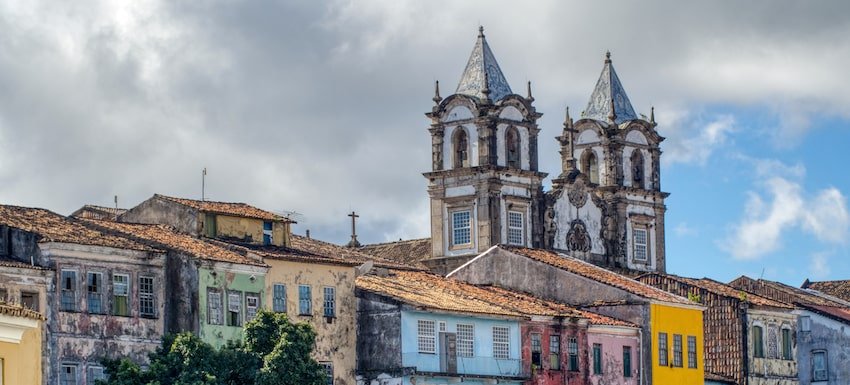
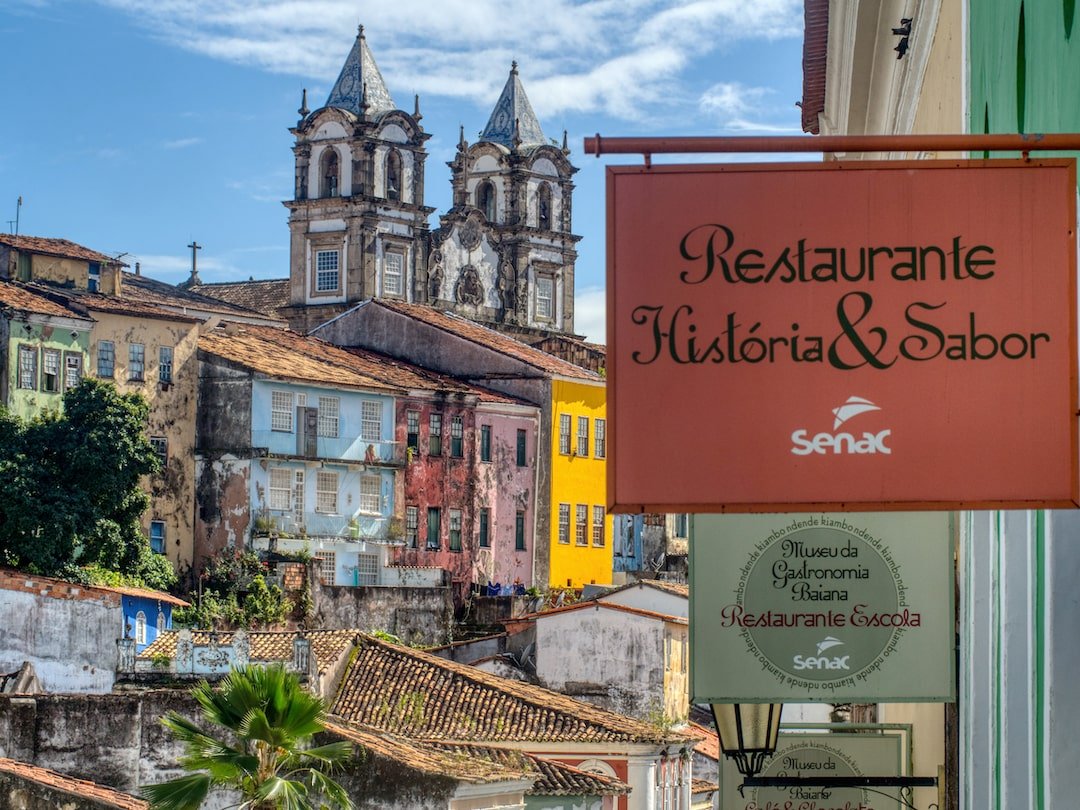
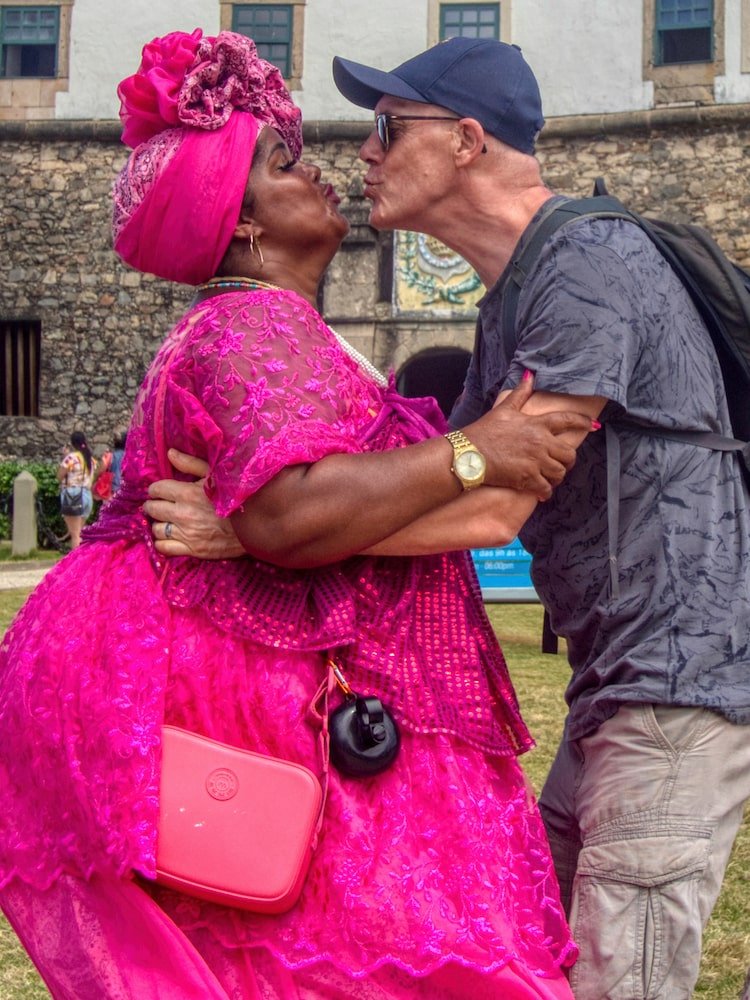
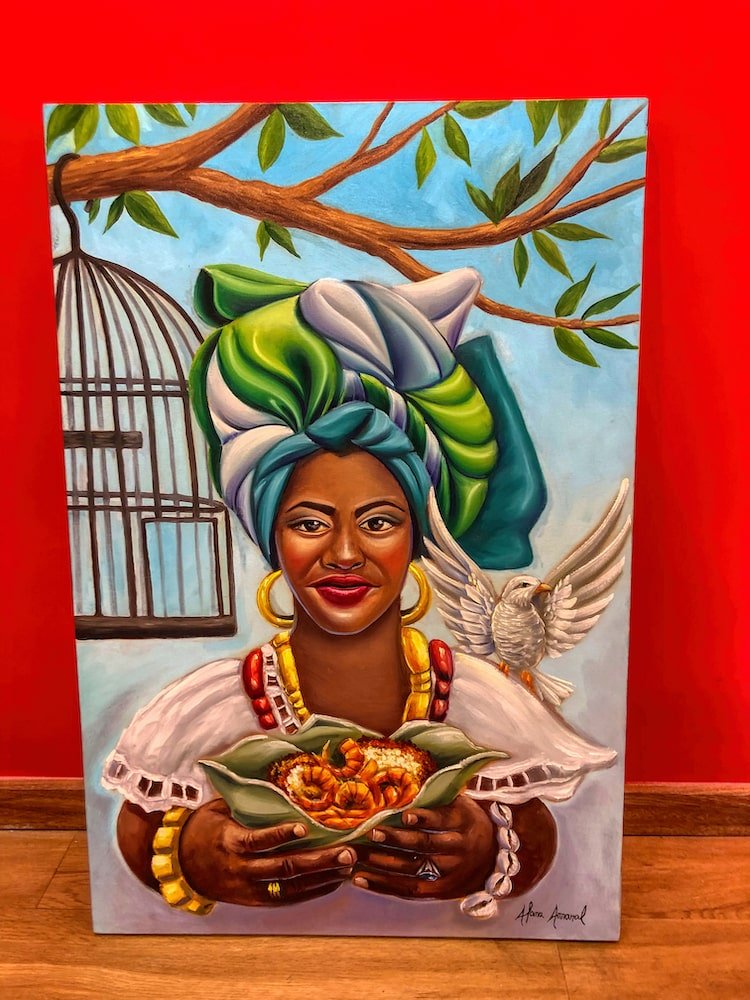

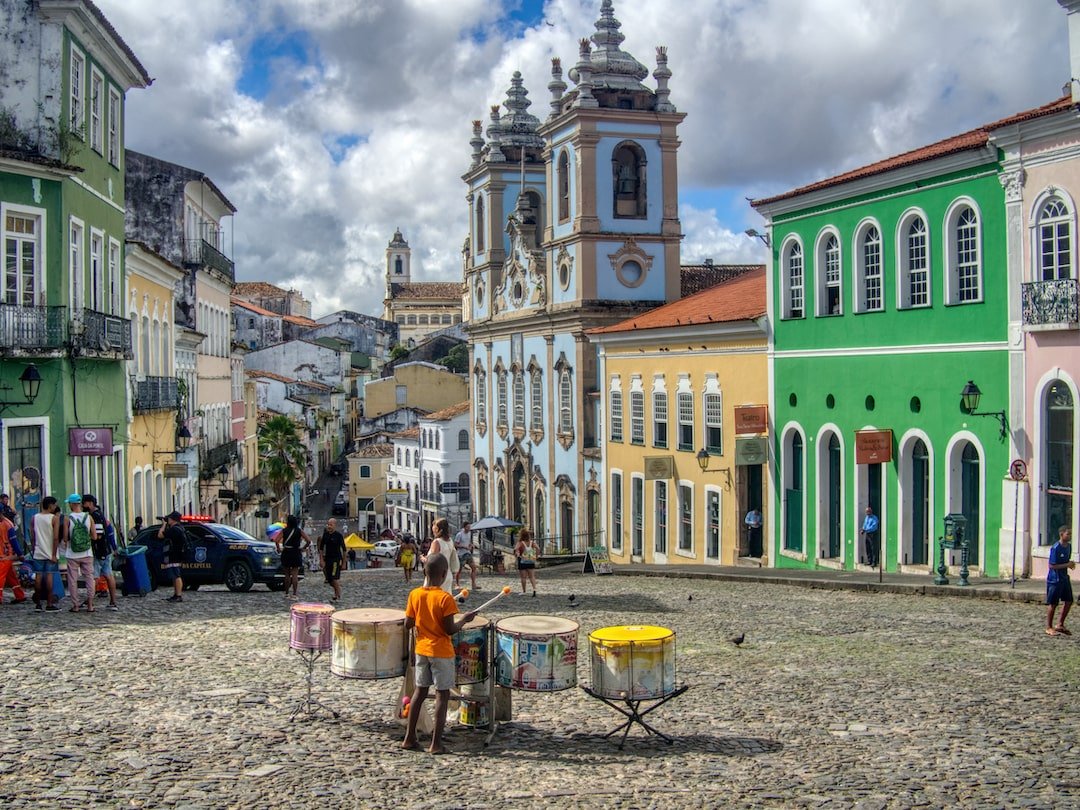
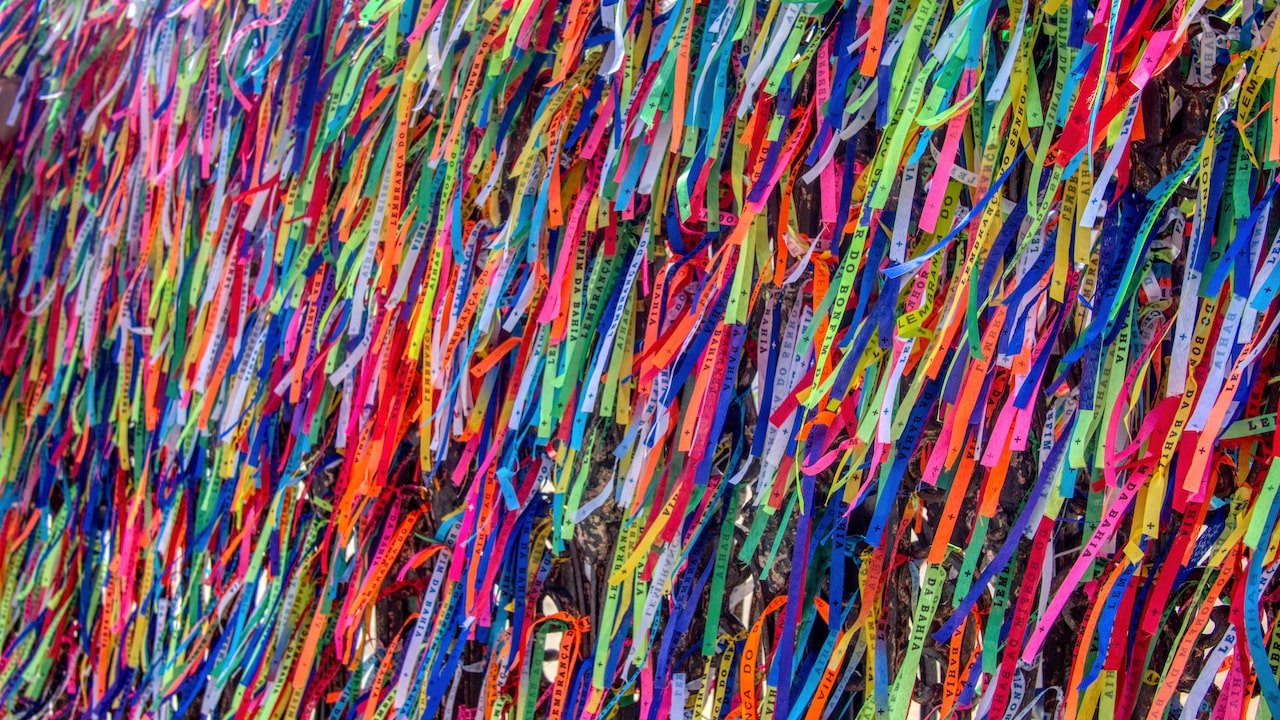

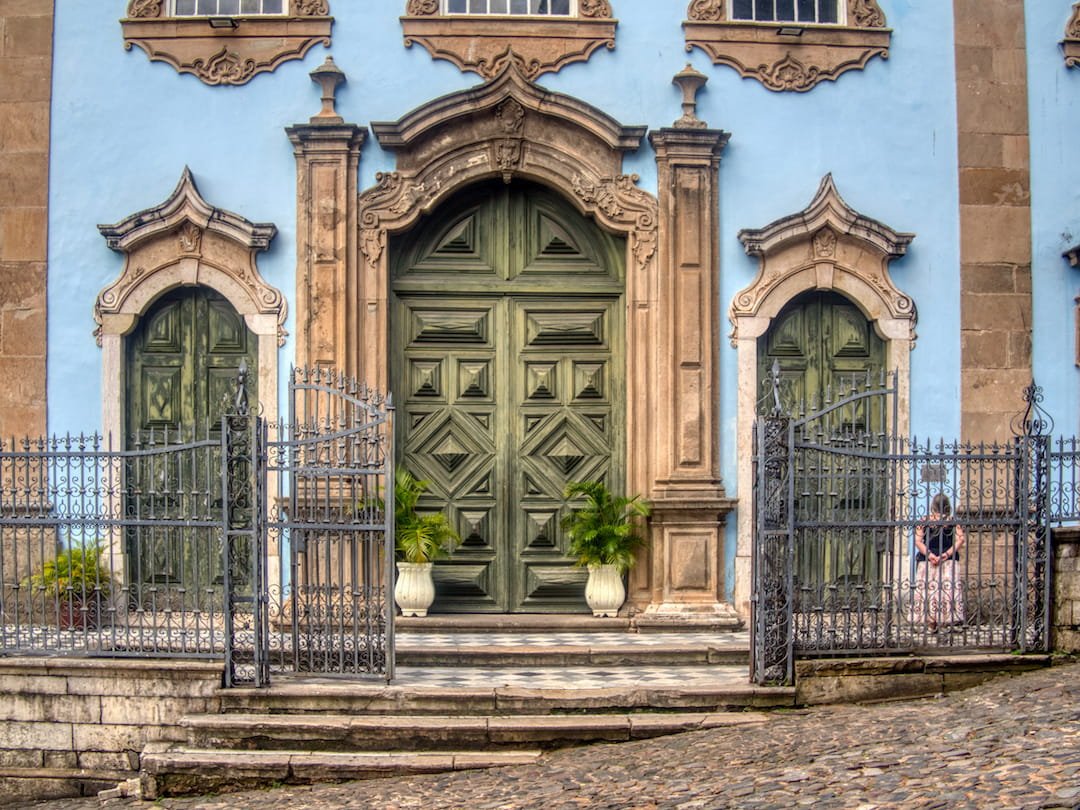

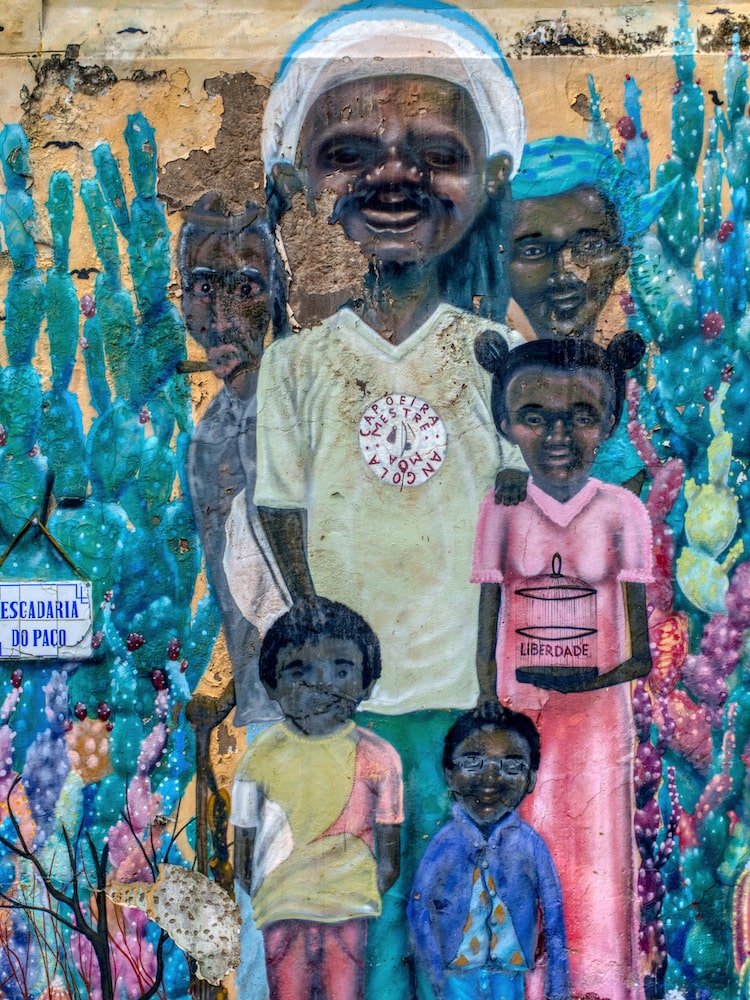

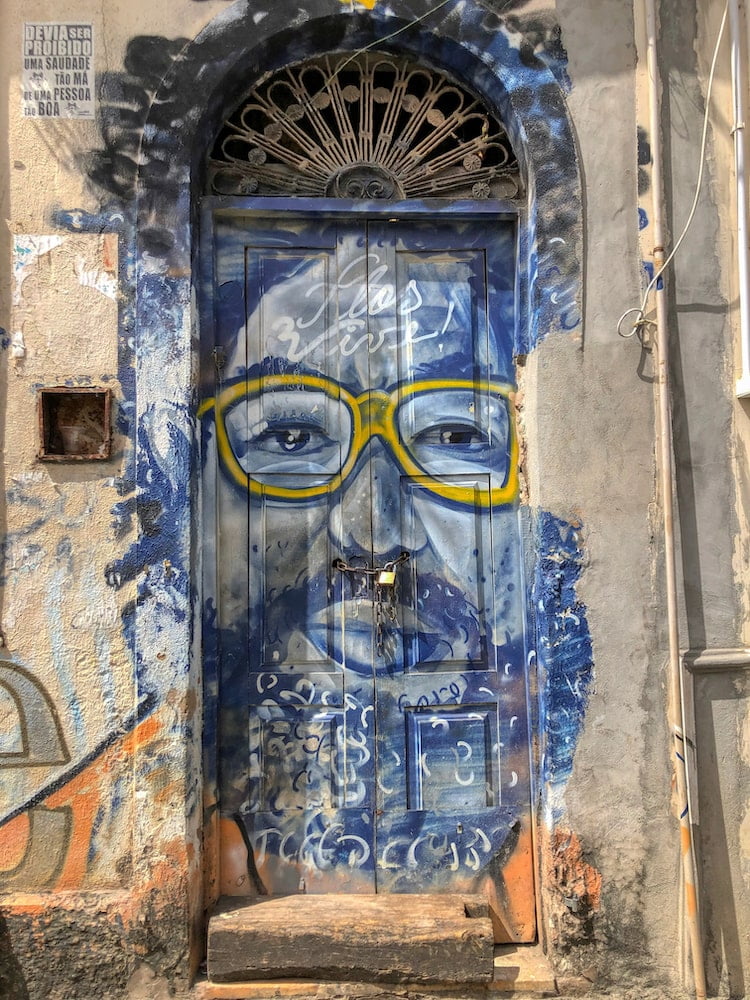
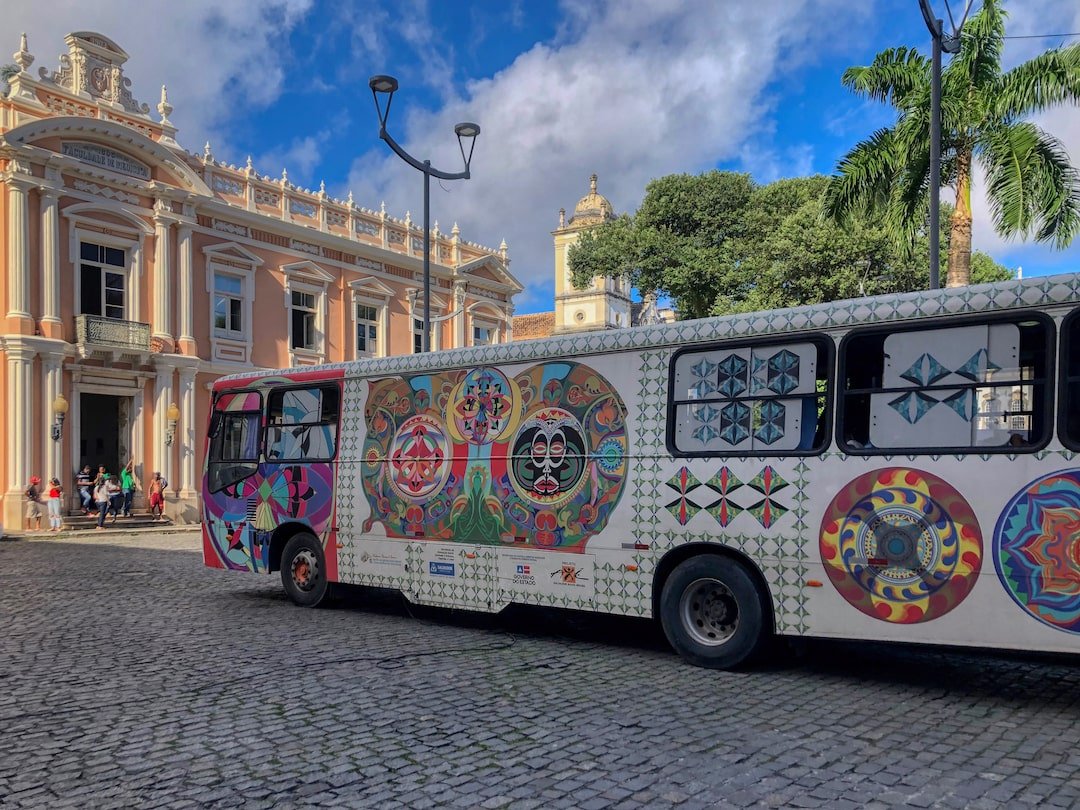

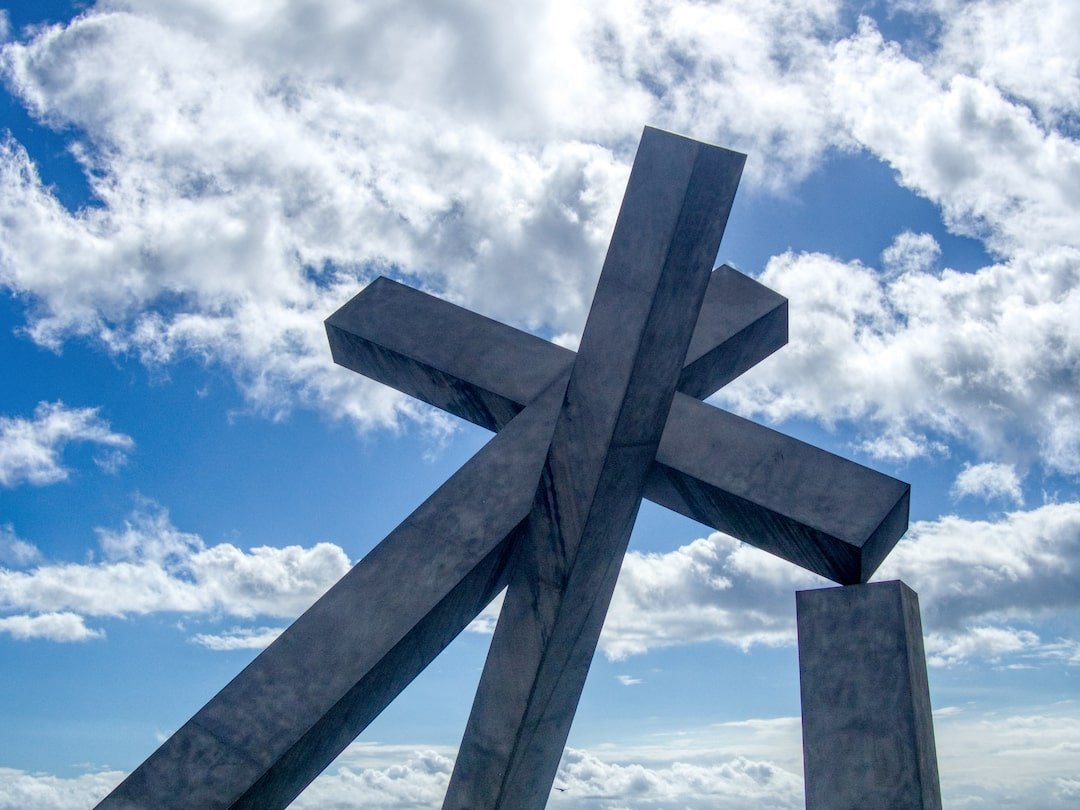
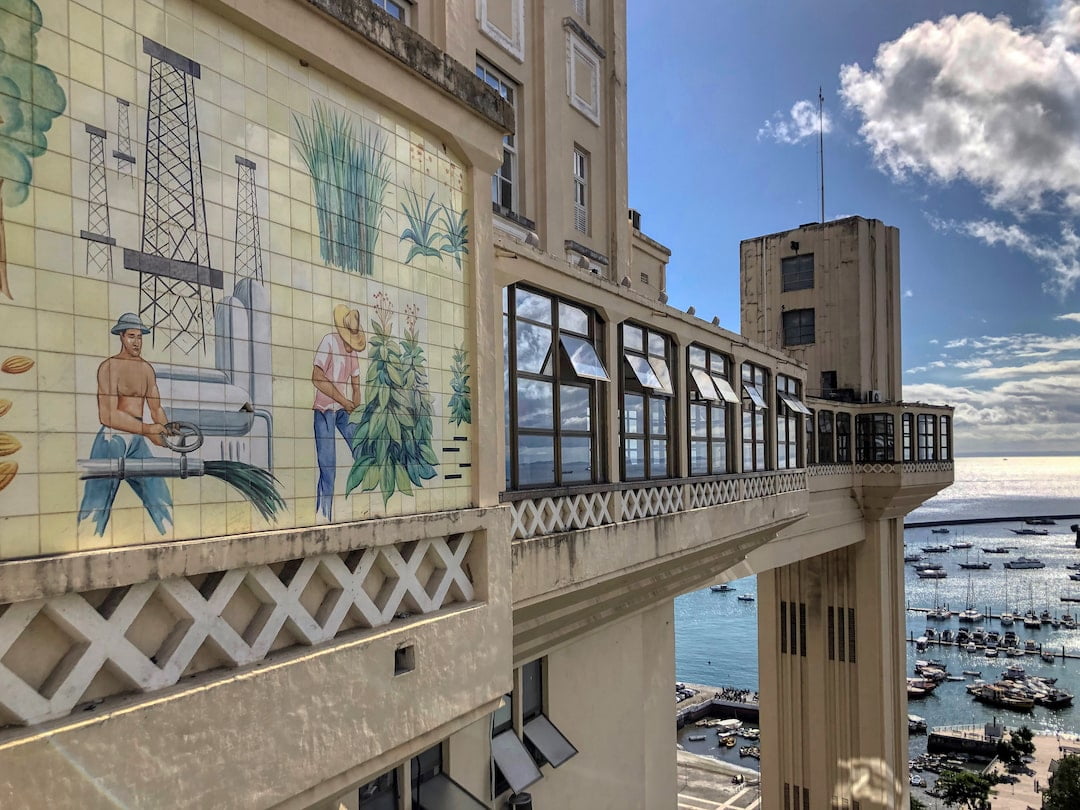
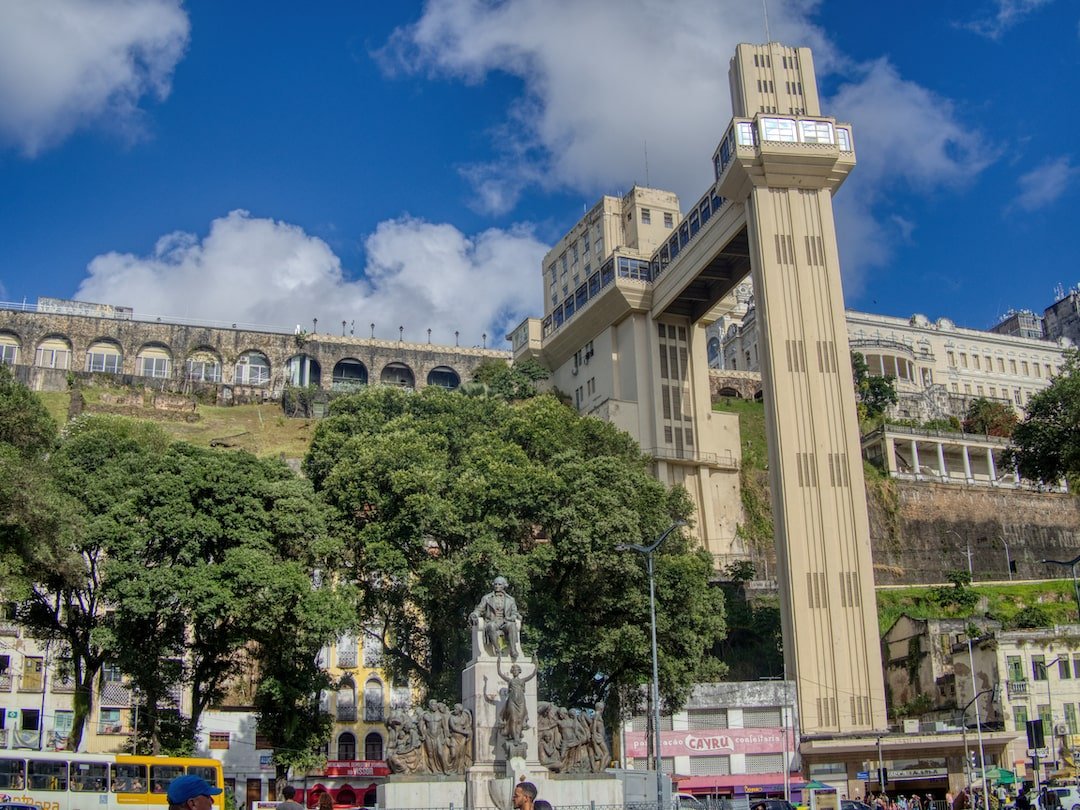
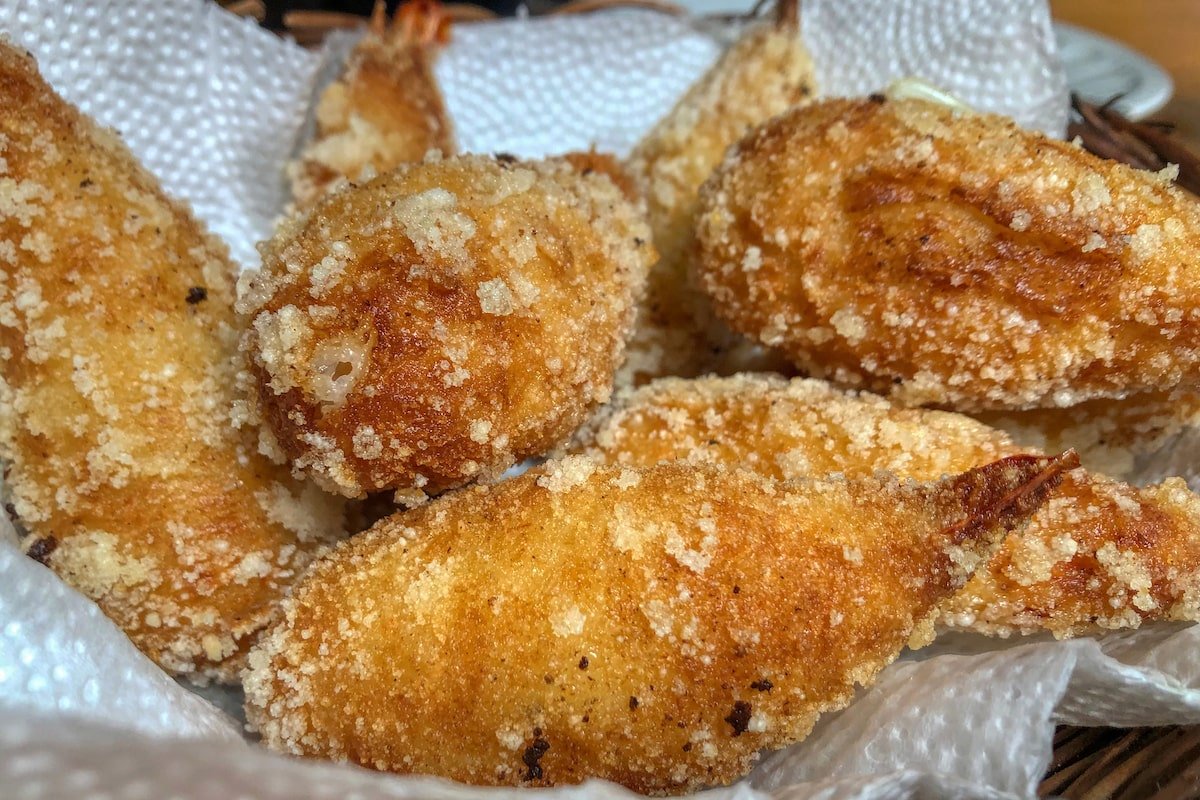
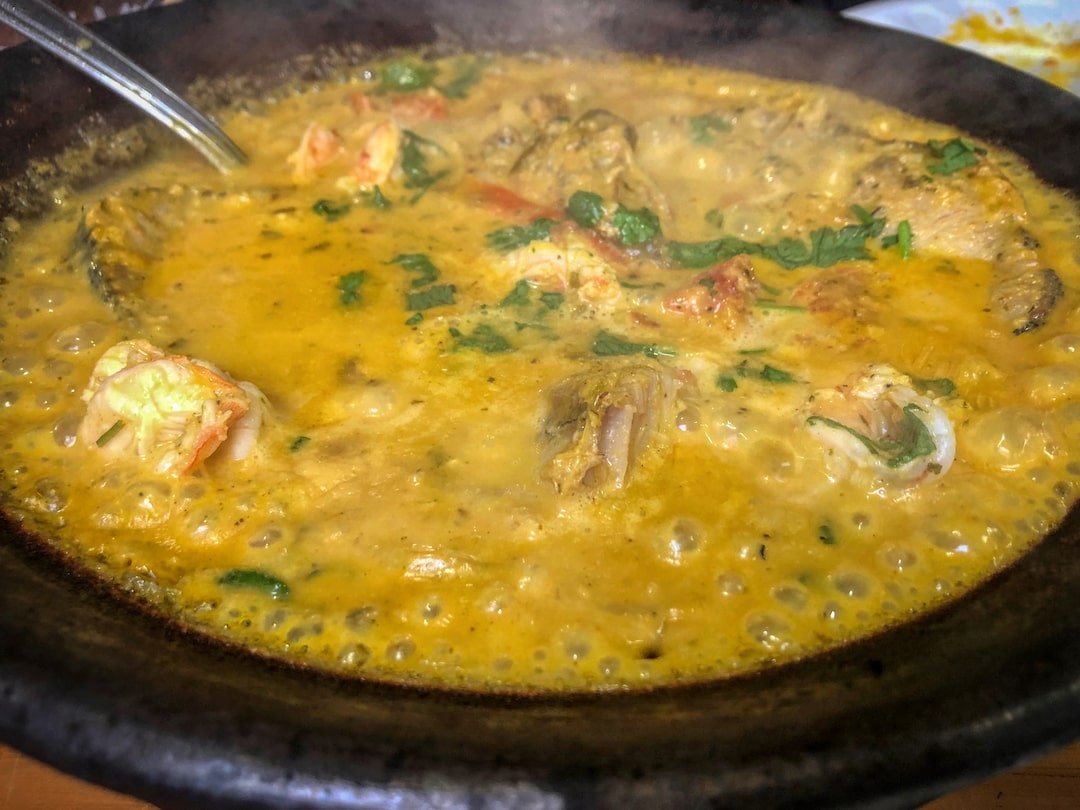
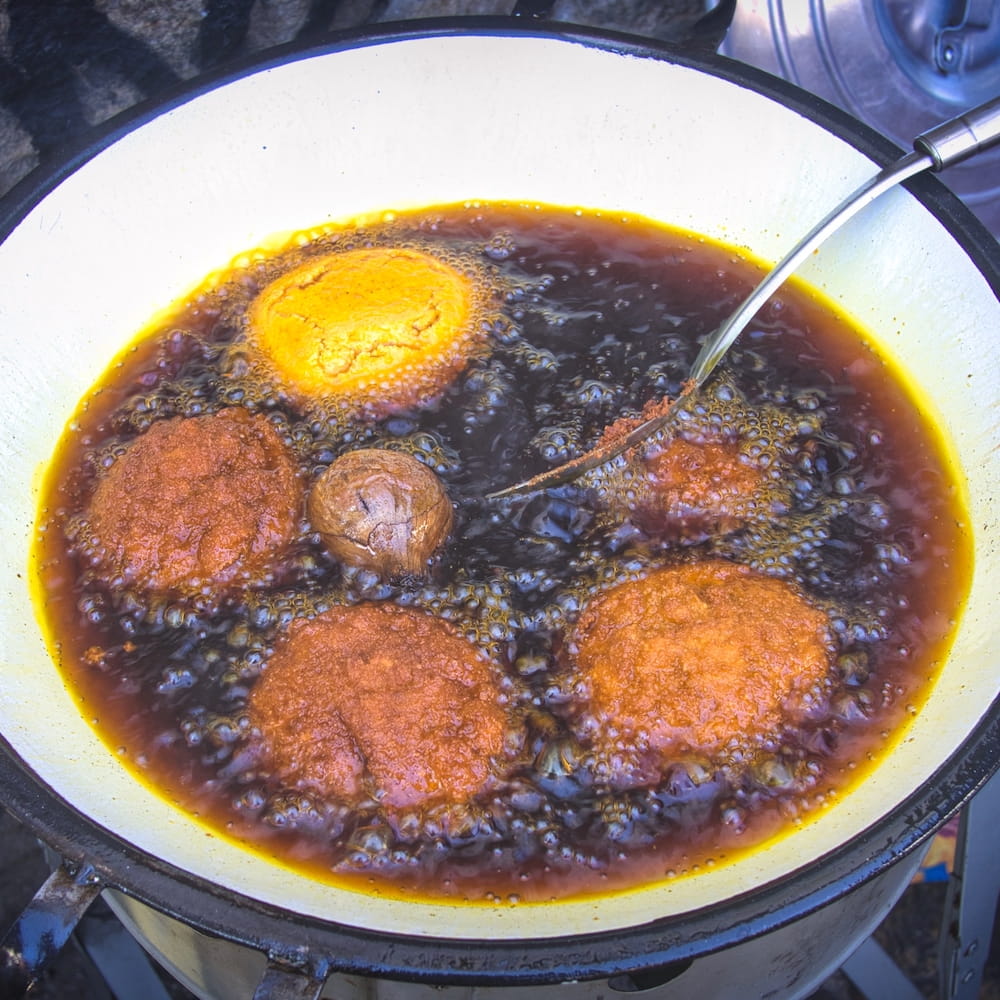
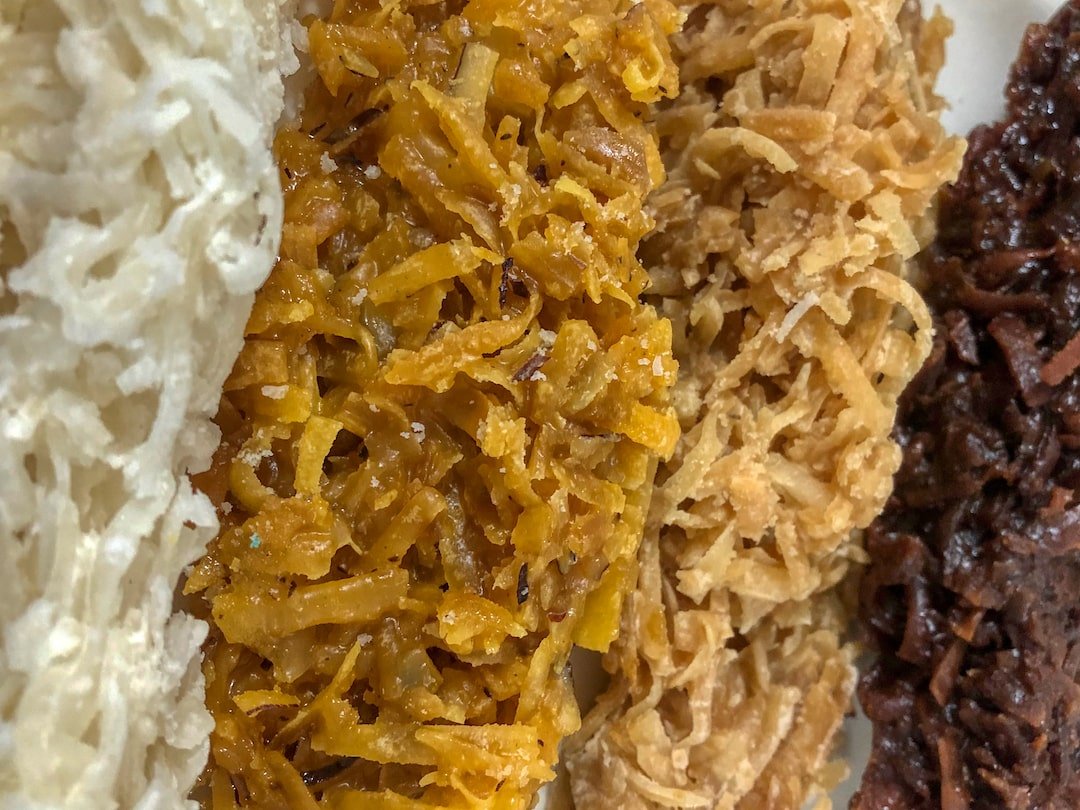
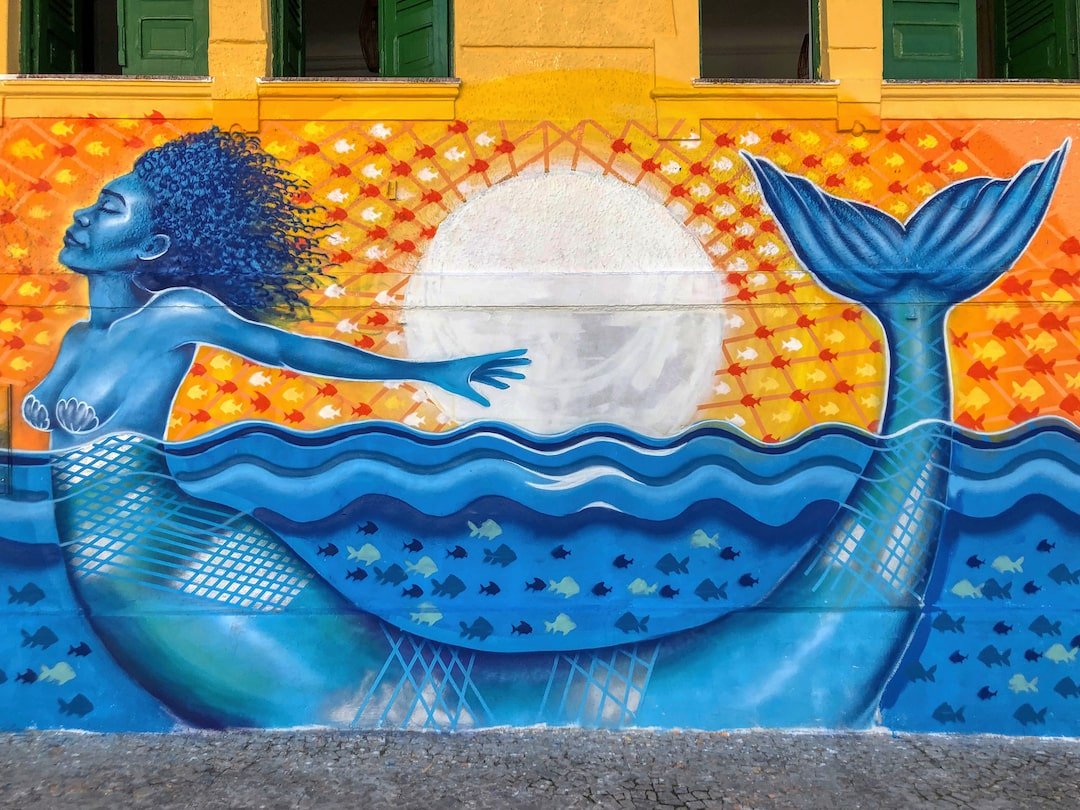


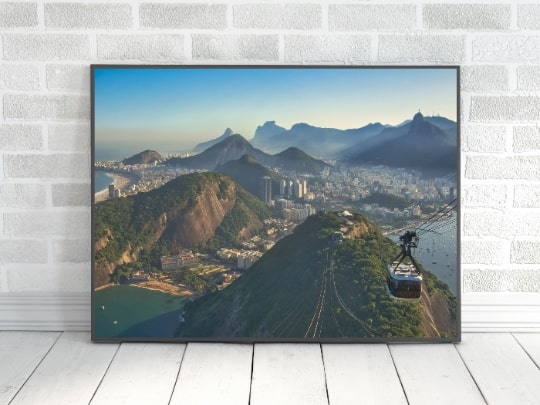
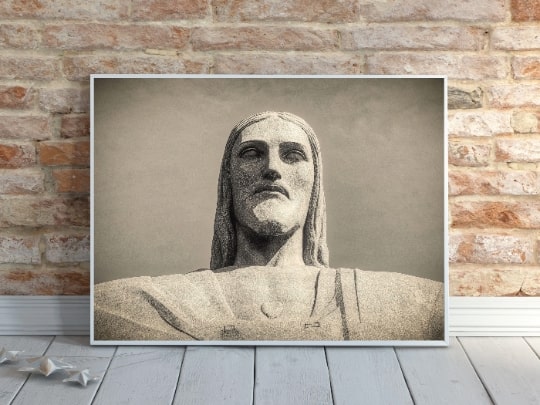
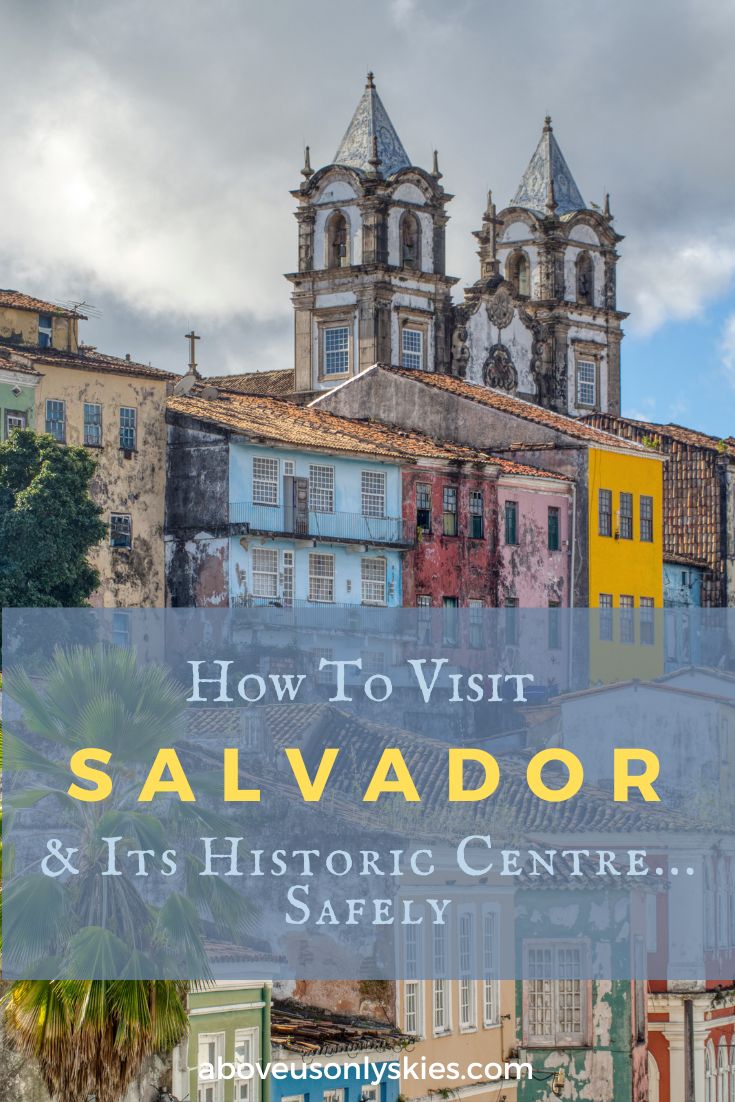
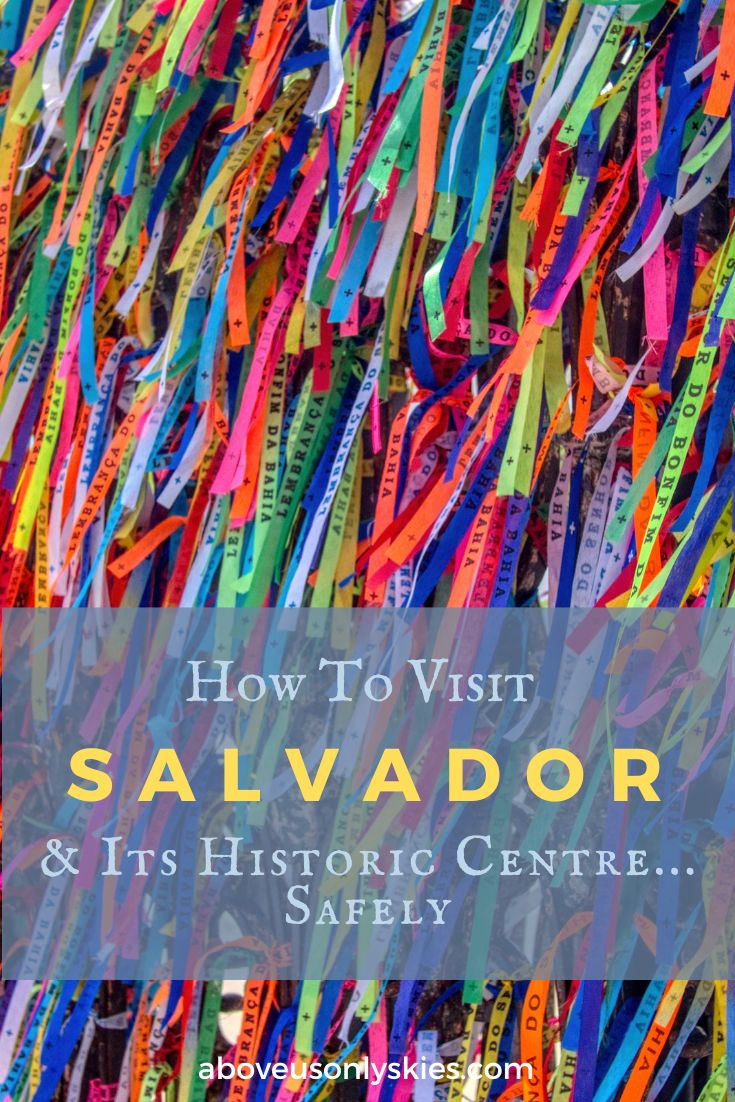




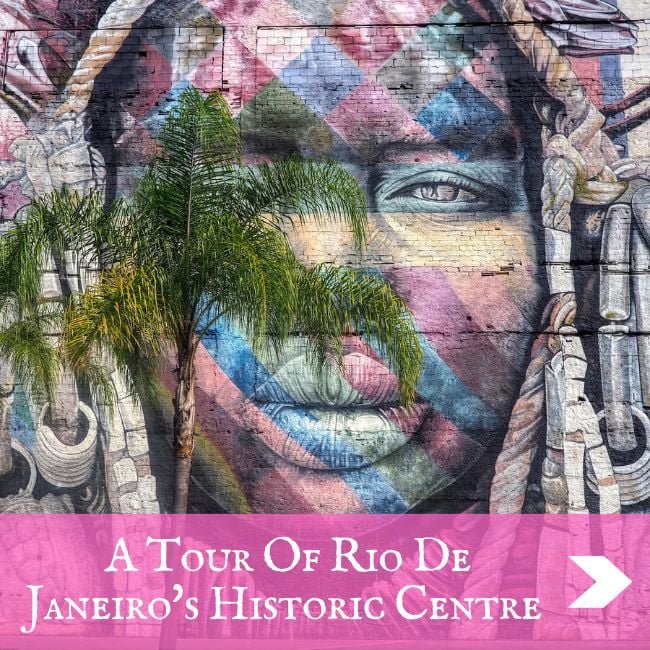

0 Comments